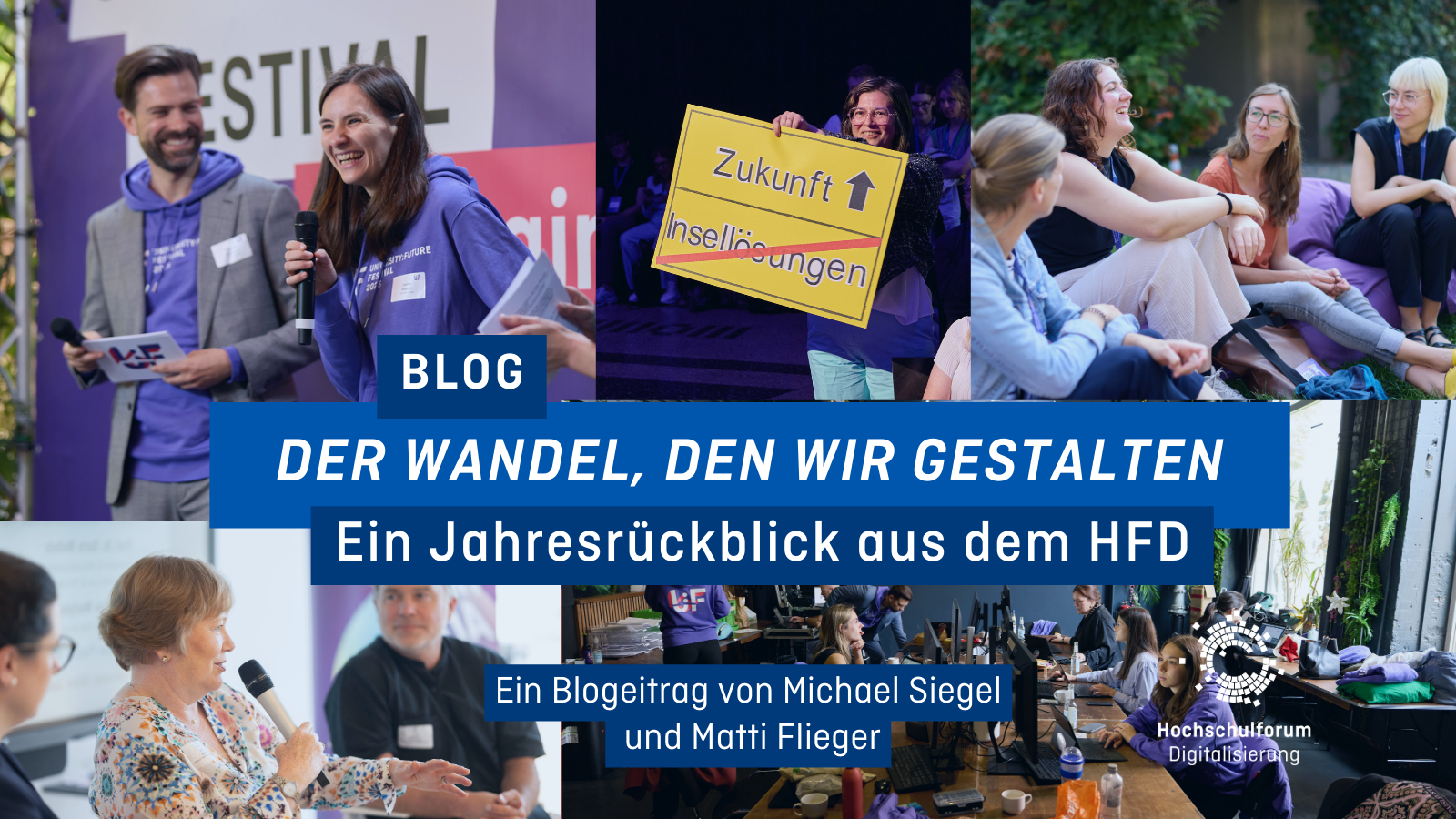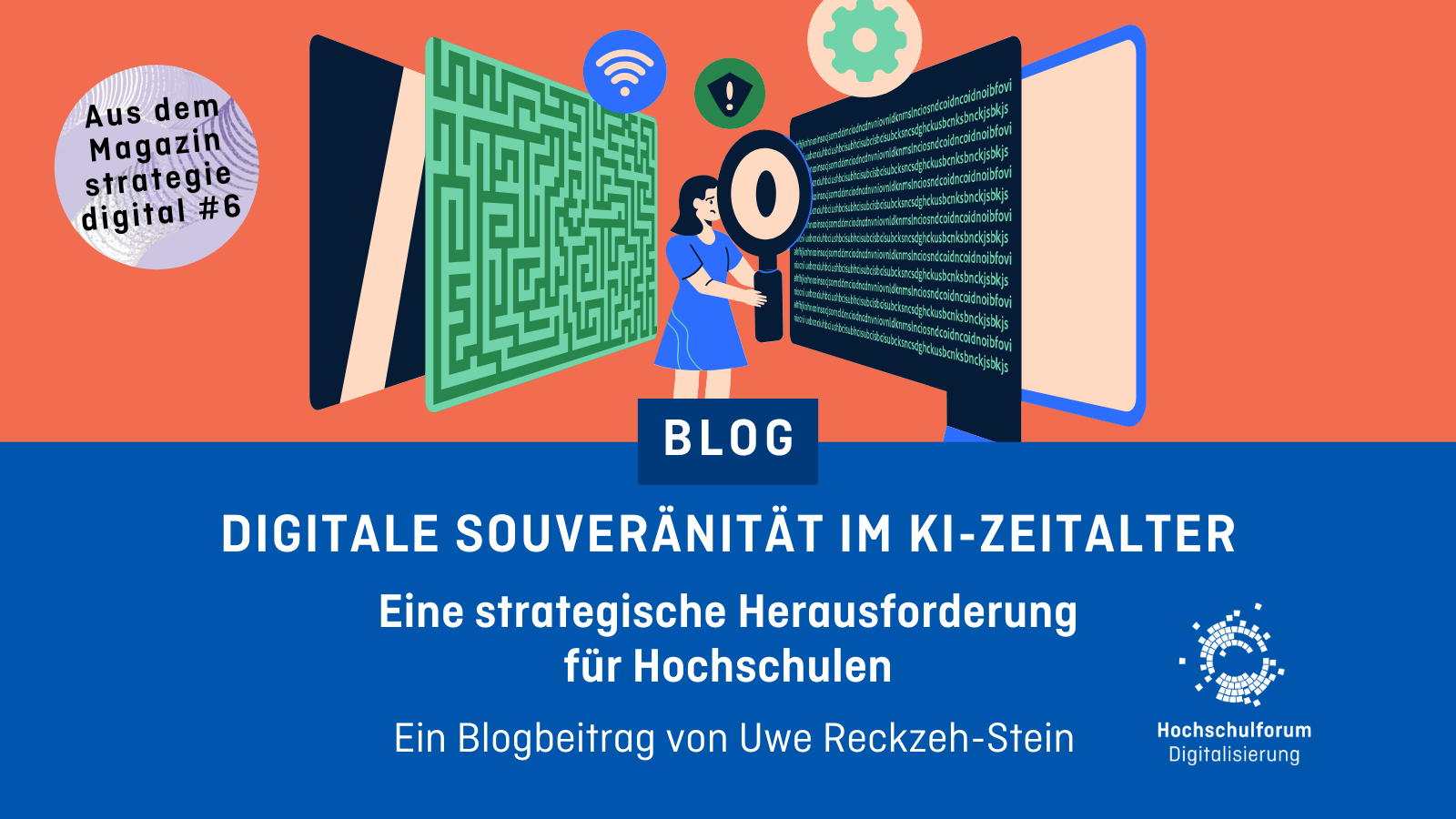What does sustainability mean in terms of university teaching? An educational perspective.
What does sustainability mean in terms of university teaching? An educational perspective.
24.07.19
Hans-Christoph Koller, Angelika Paseka and Sandra Sprengler from the University of Hamburg discuss four dimensions of an educational perspective on sustainability in university teaching. A guest article.
This article has already been published in: Synergy. Specialist magazine for digitization in teaching #07, (pp. 38 – 41). We would like to thank Synergie, the journal for digitization of the University of Hamburg, for providing this article and for approving its republication.
This article was automatically translated using DeepL Translator. Please excuse any errors.
![Learn sustainability Photo: [https://unsplash.com/photos/gEKMstKfZ6w Ben White] Sustainability saves the planet](/sites/default/files/images/blog/ben-white-gEKMstKfZ6w-unsplash.jpg)
This article discusses what sustainability in university teaching can mean from an educational perspective. Based on the definition of the Brundtland Report, the Sustainable Development Goals (SDGs) of the United Nations and the concept of the UNESCO World Action Programme Education for Sustainable Development (ESD), the content, didactic, reflexive-science-critical and institutional dimension of sustainability, designed by the Competence Centre Sustainable University (KNU) of the University of Hamburg, is presented. It becomes clear that sustainability can be an object on the one hand, and a quality characteristic of courses on the other. Finally, it is shown to what extent sustainability and digitisation can complement each other – again with a view to the four dimensions of sustainability mentioned above.![The four dimensions of an educational perspective on sustainability Photo: [https://unsplash.com/photos/HH4WBGNyltc Jaredd Craig] Read here about the four dimensions of an educational science perspective on sustainability](/sites/default/files/images/blog/jaredd-craig-HH4WBGNyltc-unsplash.jpg)
What does sustainability mean?
In order to pursue the question raised, it is first necessary to clarify the variants of the meaning of sustainability. On the one hand, sustainability can be understood as a long-term effect in the sense of a “longer lasting effect” (Dudenredaktion 2014). On the other hand, the term can be used according to the definition of the Brundtland Report: “Sustainable development is a development that secures the quality of life of the present generation and at the same time gives future generations the option of shaping their lives” (World commission on environment and development 1987, p. 54). This report brought the concept of sustainable development to a broad public.
After further conferences and agreements in the following years, Agenda 2030 was adopted in 2015, which is intended to be a future treaty and names 17 development goals or sustainable development goals. The states of the world community are to participate in achieving these goals (U.N. General Assembly 2015).
In order to provide people with the skills and abilities that are necessary to act in accordance with these goals, education is required that places these issues in the focus of teaching and learning. In 2014 UNESCO therefore proclaimed the “UN Decade of Education for Sustainable Development” and the “World Programme of Action” (UNESCO 2014).
What does sustainability (in) mean in university teaching?
As an educational institution, the university should – taking into account the above-mentioned premises – feel committed not only as an organisation to the claim of sustainability, but also in teaching. In order to achieve this, four dimensions must be taken into account, which were elaborated by the Competence Centre Sustainable University of the University of Hamburg in relevant position papers in 2015 and 2016 respectively.
1. on the content dimension
Sustainability in and of university teaching can first of all mean that sustainability topics are the subject of courses. Relevant topics can be found in the list of SDGs. Depending on the course of study, topics are to be selected and adapted according to the module objectives. For educational science courses in teacher training, topics such as gender equality or reduced inequalities are suitable. Issues in the context of climate change or sustainable consumption, for example, are important for didactic teaching. In this respect, university teaching should be understood in Klafki’s sense as a contribution to general education centred around key social problems (Klafki 2007).
2. on the didactic dimension
From a didactic point of view, sustainability in university teaching means that sustainability is a quality feature of courses. In this sense, courses should be designed in such a way that what is taught is not only effective in the short term, but also in the long term. Furthermore, sustainable teaching also means that university teaching contributes to sustainable development in the sense outlined above. It should therefore not only secure the quality of life of the present generation, but also the future viability of the next generation by preserving or opening up opportunities for them to shape their lives. Sustainable teaching could thus be understood as a contribution to university education: it enables students to acquire the ability and willingness to develop new possibilities of interpretation and action in the face of new social or technological challenges for which the knowledge available to date is no longer sufficient (Peukert 1998).
In this sense, sustainable teaching means, among other things:
– the possibility for students to (co-)shape their own learning processes
– the consideration of individually different prerequisites on the part of the learners as well as the biographical significance of learning processes
– reflecting on and taking responsibility for possible consequences of learning processes
– the future openness and connectivity of learning processes for future learning in a socially responsible manner
– the awareness that university teaching is a model for students’ own future actions (especially in the case of teacher training courses)
3. on the dimension critical of reflexive science
This dimension refers to a critical, examining view of one’s own subject and can be recognised by whether it is open to alternative ways of thinking and new perspectives with regard to a topic area.![There must be sustainability everywhere. Photo: [https://unsplash.com/photos/LdpNxPUoR-0 Imre Tömösvári] Let sustainability grow!](/sites/default/files/images/blog/imre-tomosvari-LdpNxPUoR-0-unsplash.jpg)
4. on the institutional dimension
This dimension becomes visible in the planning, monitoring and evaluation of courses that is sustainable, i.e. oriented towards the future and transcends (institutional) disciplinary boundaries, for example by using evaluations for the (re)design of course formats.
An attempt to think of sustainable teaching at the university as a contribution to education for sustainable development was made by de Haan (2010). In order to be able to cope with future challenges that cannot yet be foreseen, it is therefore necessary to develop skills, abilities and attitudes that make it possible to shape an open future. de Haan differentiates such a shaping competence into twelve partial competences and assigns these to the three key competences formulated by the Organisation for Economic Cooperation and Development (OECD).
Sustainability and digitisation
In order to think sustainability in connection with digitalisation, the four dimensions of sustainable teaching described above offer themselves.
With regard to the content dimension, existing proposals (Danz et al. 2018) can be taken up and modified for use at the university. Concrete fields of application and application arise, for example, in the following contexts:
– Visualization of processes and phenomena: The topics of sustainable teaching can be made visually accessible and illustrated in a variety of ways using digital tools. For example, digital maps and globes can be used to illustrate complex processes and phenomena in an understandable form. Digital maps can be updated more quickly, which is particularly advantageous for maps whose contents change rapidly (e.g. local maps). These maps do not have to be reprinted every time they are changed. A disadvantage can be that the data format may only be available for a limited period of time, while printed maps are available for the long term.
– Spatial analysis with geoinformation systems: Geoinformation systems can be used to collect and process data (e.g. environmental data such as temperature, precipitation, CO2, aerosols). The data can be collected at different scales and the results can be combined in a digital map.
– Use of data in real time: In some areas (e.g. weather observation or disaster monitoring), data is available in real time and can be docked to the sustainability content fields.![Teach your environment sustainability! Photo: [https://unsplash.com/photos/PXwGitZdbJQ Nick Fewings] Teach your environment sustainability!](/sites/default/files/images/blog/nick-fewings-PXwGitZdbJQ-unsplash.jpg)
Teach your environment sustainability!
With regard to the didactic dimension, digital media offer new approaches to knowledge, but also alternative possibilities for processing and presentation. This can be motivating for students and set sustainable learning processes in motion. But digitisation can also increase students’ participation and responsibility and open up new personal access, for example through data processing and communication using digital conference tools at local, national and international level. In this way, new perspectives can be learned and discussions can take place with others across spatial boundaries.
With regard to the reflexive science-critical dimension, perspectives on one’s own subject and the methods used there can be expanded through digitisation, because previously untapped communication spaces arise. At the same time, however, it is also important to make digitisation itself the object of a reflexive critical debate on science. For although inequalities can be reduced through the creation of cross-border spaces and multiple accesses to information, the question of generating new inequalities also arises.
With regard to the institutional dimension, digitisation can help to cross disciplinary boundaries – both in terms of content and by creating virtual networks. The transfer of knowledge seems to be easier if the necessary skills are available.
As the above examples show, the combination of sustainability and digitisation of university teaching offers many opportunities, but also presents new challenges, including the task of looking at the long-term consequences of digitisation for future generations.
Literature
Danz, R. et al. (2018). Orientierung gefragt – BNE in einer digitalen Welt. Diskussionspapier zur wechselseitigen Ergänzung von Bildung für Nachhaltige Entwicklung und Digitaler Bildung im Bereich Schule. Verfügbar unter: https://uhh.de/3egd5 [25.03.2019].
de Haan, G. (2010). The development of ESD-related competencies in supportive institutional frameworks. International Review of Education, 56 (2), S. 315 – 328.
Dudenredaktion (2014). Duden. Die deutsche Rechtschreibung (26. Auflage). Berlin: Duden Verlag.
Klafki, W. (2007). Grundzüge eines neuen Allgemeinbildungskonzepts. In Klafki, W. (Hrsg.), Neue Studien zur Bildungstheorie und Didaktik: Zeitgemäße Allgemeinbildung und kritisch-konstruktive Didaktik (6. Auflage) (S. 43 – 81). Weinheim: Beltz.
KNU (2015). Was kann Nachhaltigkeit im Blick auf Lehre und Studium bedeuten? Positionspapier von Team 2 des Kompetenzzentrums. Hamburg: Universität Hamburg.
KNU (2016). Zwischen Wissenschaftsfreiheit und gesellschaftlicher Verantwortung. Die Universität Hamburg auf dem Weg zu einer Universität der Nachhaltigkeit. Positionsbestimmung. Hamburg: Universität Hamburg.
Peukert, H. (1998). Zur Neubestimmung des Bildungsbegriffs. In Meyer, M. & Reinartz, A. (Hrsg.), Bildungsgangdidaktik. Denkanstöße für pädagogische Forschung und schulische Praxis (S. 17 – 29). Opladen: Leske & Budrich.
U. N. General Assembly (2015). Transforming our world: the 2030 Agenda for Sustainable Development. New York: United Nations.
UNESCO (2014). Roadmap zur Umsetzung des Weltaktionsprogramms „Bildung für nachhaltige Entwicklung“. Bonn: Deutsche UNESCO-Kommission e. V.
World commission on environment and development (1987). Our common future: Oxford. United Kingdom: Oxford University Press.
DOI
10.25592/issn2509-3096.007.007
Opinions on the topic in the Synergie-blog
Post as Podcast
CC BY 4.0




 Michael Siegel
Michael Siegel 
 Andreas Giesbert
Andreas Giesbert 
 Uwe Reckzeh-Stein
Uwe Reckzeh-Stein 